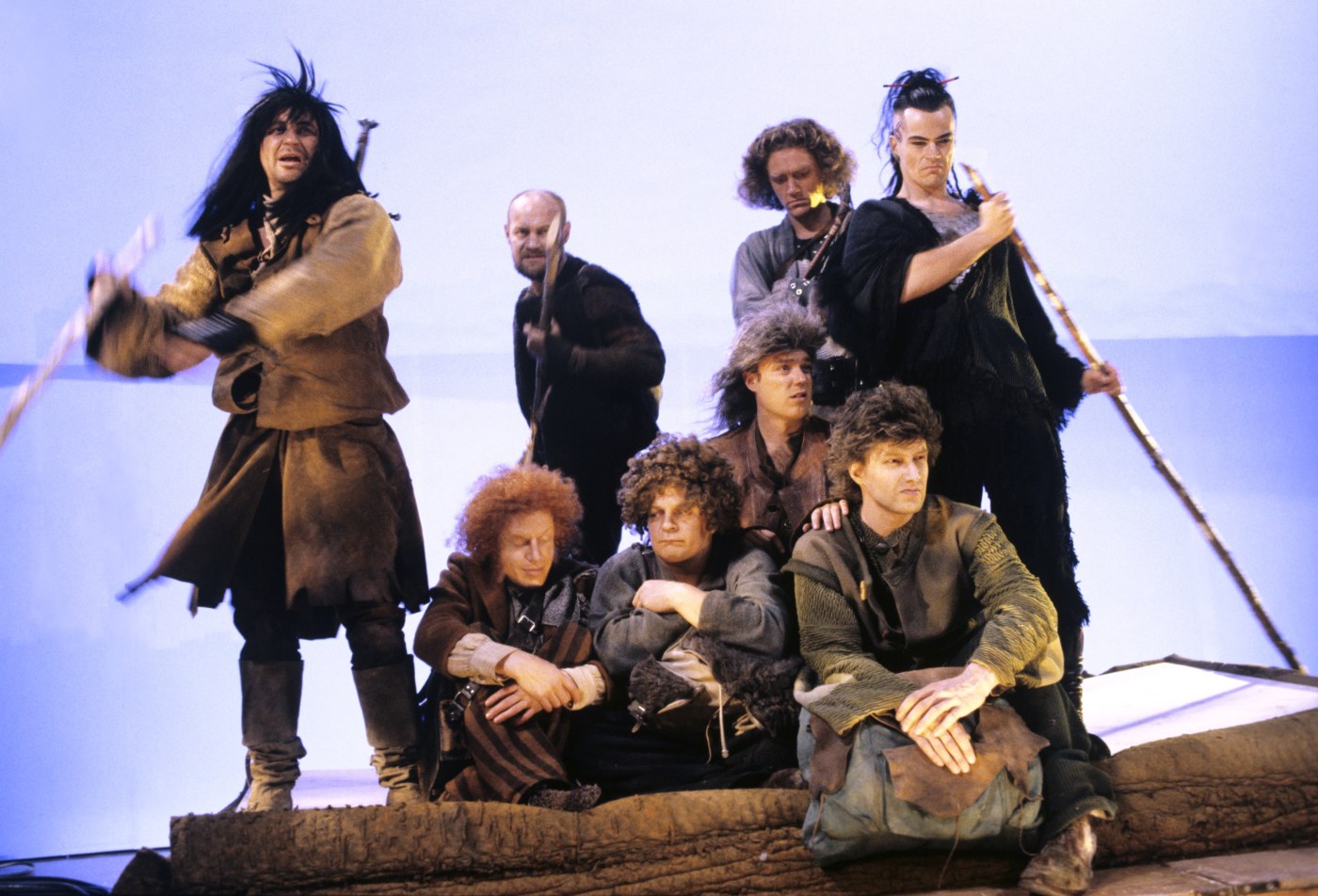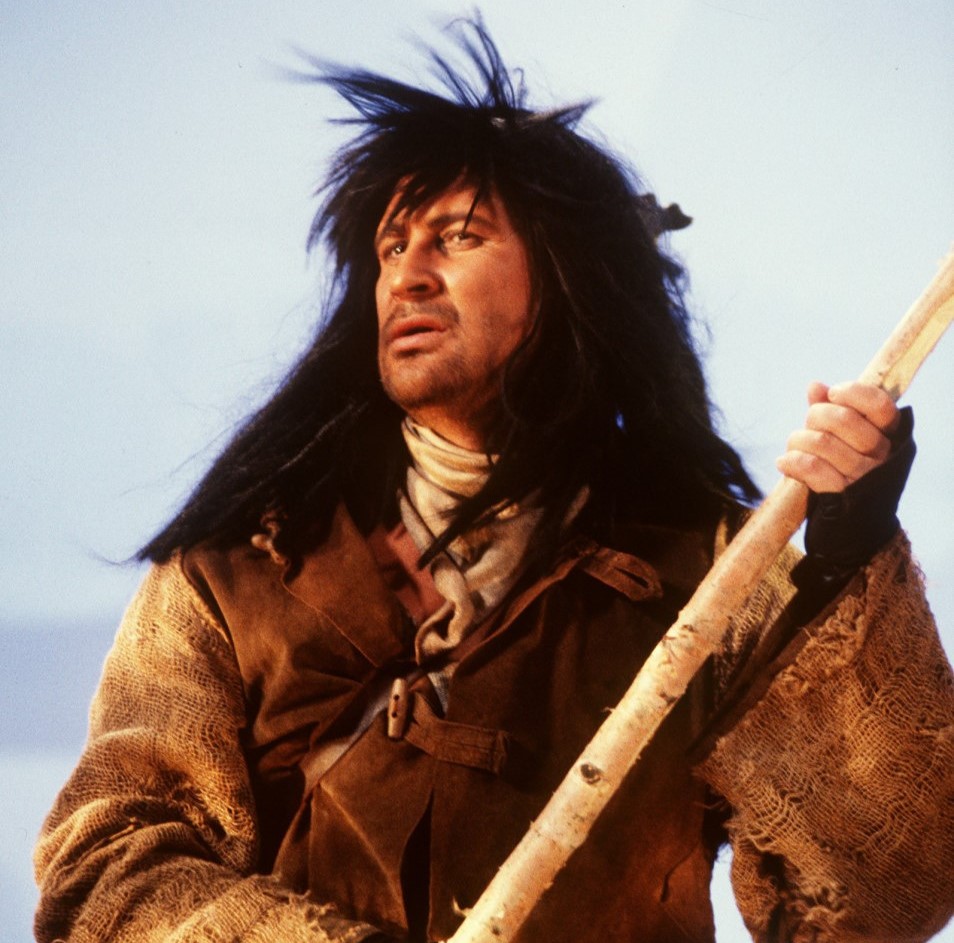Tolkien Before Jackson Part 6: The Hobbits (1993, directed by Timo Torikka)

Hobitit, a nine-episode miniseries released on Finnish TV, is probably the most difficult of these media to find—at least through legitimate methods like streaming or DVD. Which is a shame because it’s perhaps the best-made Lord of the Rings TV or movie adaptation before Jackson’s trilogy arrived. It may not have the sense of cinematic scale and wonder that Ralph Bakshi accomplishes in the best scenes of his 1978 Lord of the Rings movie, but it has the best overall quality.
The first episode shows a crowd of young hobbits convincing an ancient hobbit to tell them the story of Sam and Frodo. He tells it from a book, from Bilbo finding the ring to Frodo leaving for the Gray Havens. As the ancient hobbit tells the story, it becomes clear that he is Samwise Gamgee.
Watching the episodes back-to-back takes about three and a half hours—roughly the time for watching Jackson’s extended cut of The Fellowship of the Rings. The miniseries has many of the same flaws as the projects discussed earlier. There’s a great deal of blue screen, much of it obvious. The limited sets are often obvious. There are some unusual music choices—such as a bluesy guitar theme for Gollum.
However, unlike most of the projects discussed here, the miniseries has a clear direction and sense of craft.
Yes, the blue screen often needs improvement. However, this time, the lighting crew knows how to accommodate that—creating shadows for the Mordor scenes so it’s not obvious where the actors end and the false backgrounds begin.
Yes, it includes scenes that are terribly clunky in the Finnish and Russian adaptations—like Tom Bombadil meeting the hobbits. However, here Bombadil is depicted as a somber indigenous shaman (wearing brown beaded garments, never smiling) rather than a jolly children’s TV host. It may veer away from the book, but it fits the rest of the miniseries’ serious, epic tone.
Yes, key scenes are removed, mostly anything requiring heavy special effects or crowds. Frodo blacks out after being stabbed by the Black Riders, and the scene cuts to him waking up in Rivendell. Gandalf tells the group to leave Moria without him, goes down a corridor, and then is seen falling down a chasm with no sight of a Balrog. Once the fellowship divides, the story focuses on Frodo and Sam—meaning the script omits the Two Towers and Return of the King material about Rohan, Helm’s Deep, and Gondor. Since Frodo and Sam never meet Saruman, the plot shows the Scouring of the Shire, but Saruman’s death happens offscreen.
However, most of the plot omissions don’t feel like plot holes because they fit the overall vision. The miniseries states from the start that it will focus on part of the story. It’s not titled The Lord of the Rings. It’s titled The Hobbits. Sam Gamgee’s narrator role firmly sets this narrative in the hobbits’ perspective. Hence, leaving out most of the big set pieces feels like a deliberate artistic choice rather than cheap cost-cutting.
The clear vision appears to have arisen out of necessity. The Ryhmäteatteri company had staged a six-hour theatre production of The Lord of the Rings in the late 1980s, that told the complete story. Discussions about how to adapt the full play didn’t work out, so director Timo Torikka decided to focus the story on the hobbits. It’s a compromise, but a compromise that works. Some, like Juho Gröndahl in a 2004 piece for the Finnish Tolkien Society’s fanzine Legolas, have argued it even captures the book’s spirit better that Jackson’s films: it keeps the story grounded in the hobbits, not the grand battle scenes that Hollywood audiences crave.
Yes, there are a couple of eccentric choices that fans would find odd today. Most notably, Boromir is depicted as a proto-samurai warrior. His hair is in a topknot. His armor looks Japanese. His sword is a samurai sword. His shield looks like a haka bamboo hat. The depiction will surprise viewers who grew up with the European-looking warriors of Jackson and Bakshi’s movies. However, even this odd choice makes sense in its own way. Boromir is a warrior prince with a deep sense of tradition, family allegiance, and honor—all values that fit a samurai warrior.
There is also a radical casting choice that is as bold as anything Jackson tried. Gollum and Aragorn are played by the same actor, Kari Väänänen. Since there presumably wasn’t time for Väänänen to lose lots of weight for the Gollum scenes, Gollum is far heavier than he is in most Tolkien adaptations. However, Väänänen acts so well that it’s never obvious the same man is playing both characters.


It’s a large gamble, and it works. Making-of books about Jackson’s films, particularly Ian Nathan’s book Anything You Can Imagine, like to highlight the risk Jackson took with his actors. He mostly avoided hiring famous actors who had perceived star power (there was much pressure to get Sean Connery as Gandalf) in favor of lower-profile actors who could play the parts well. He also willingly tried revolutionary things (like using motion-capture animation in new ways to have Andy Serkis play Gollum). Tikkora makes an equally risky choice, and for all that has been said about prestige TV fantasy adaptations (Game of Thrones and so on), it’s hard to name any recent fantasy TV show that would dare have the same person play the heroic lead and the villain.
The Hobbits may not have the spectacle of Jackson’s trilogy or of more recent fantasy TV shows. However, its quality is above every other Tolkien adaptation listed in this series. It’s also a clear step above comparative projects like the BBC Narnia adaptations (which concluded just three years earlier). If Jackson’s films had never been made, this would probably be the best Tolkien adaptation available.
Come back next week as we wrap up this series and consider how these Tolkien adaptations compare to the Peter Jackson trilogy, and any lessons we can learn for future fantasy adaptations.

1 Response
[…] It’s hard to make a case that any pre-Jackson take on Lord of the Rings is a classic. Some (Torikka’s miniseries The Hobbits) are surprisingly good. Others are quite fun in their limited way (Deitch’s The Hobbit). Some […]